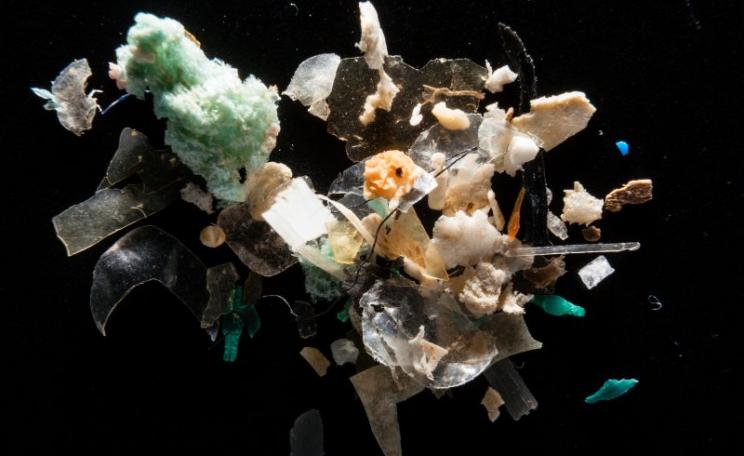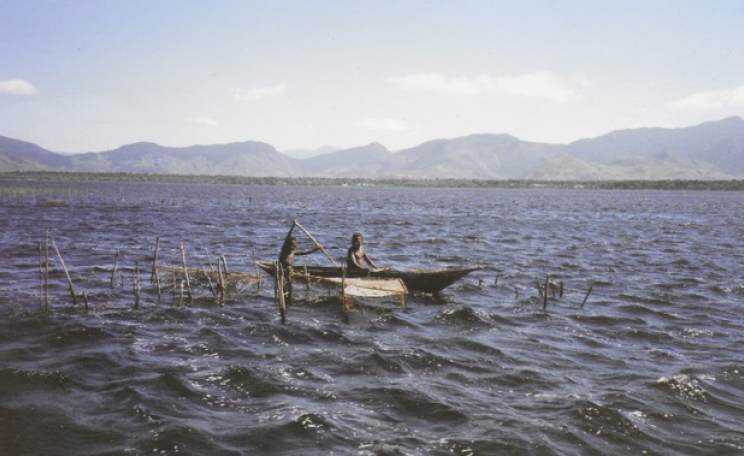We must all come together to fight the climate crisis, for united we stand, divided we fall.
It was a happy time of the year for us students, and we were all looking forward to a good, long break from the school grind.
It was during one of these days, that I noticed a normal, everyday sight while returning home from school: an ironing vendor discarding burnt and used charcoal in a nearby garbage dump.
This article has been published through the Ecologist Writers' Fund. We ask readers for donations to pay some authors £200 for their work. Please make a donation now. You can learn more about the fund, and make an application, on our website.
This sight, however, seemed a little wrong to me at the time, and it got me thinking: was this supposed normalcy harming the environment?
Burnt
Charcoal-based ironing has been around since the 17th century. It was introduced during the Victorian era and is still in use today. In India, you will see these charcoal-based ironing vendors in almost every neighbourhood.
There may be 10 million ironing carts in India that use charcoal-based irons, with each of those irons burning about five kilograms of charcoal every day.
Estimates suggest that about 50 million kilograms of charcoal are burnt every day in India alone. Just imagine the amount of charcoal burnt every day around the world! Here you will see why this is a problem.
Charcoal-based irons suited the time period in which they were invented. With changing times, however, it has shown to be more expensive than cheap, and more harmful than useful. This already poses a number of issues, both to the environment and people.
I further noticed that charcoal-based irons cause respiratory diseases, air pollution and deforestation which further contribute to climate breakdown. To solve these problems I came up with an alternative, an innovation: the solar ironing cart. New beginnings come back to the question posed at the start: was this normalcy harming the environment?
Innovate
It all started when my parents gave me an encyclopaedia about space for my fifth birthday. I loved to read, and this simple, yet fascinating, book caught my attention. With the space encyclopaedia being my first exposure to the world of science, I wanted to learn more about the subject.
And my parents and teachers also began to introduce me to simple experiments and documentaries. Science was something that I genuinely enjoyed and considered fun. As my knowledge about science increased, I started to base my school projects on it and even took my ideas to science fairs.
My interest in science grew to the point where my innovation journey began, four years ago. Once I knew that charcoal-based irons were doing more harm than any good, I wanted to come up with an alternative solution.
We must all come together to fight the climate crisis, for united we stand, divided we fall.
At this point, I was 13-years-old. I had done several projects at school and been to science fairs as well. I decided that I would use my knowledge to innovate and find solutions to problems faced by the environment, people and society as a whole.
Economic
And yes, charcoal irons are definitely harming the environment. My research of six months confirmed that.
So, I spent six months doing research on different sources of renewable energy, the science behind solar energy and different kinds of electrical components. I learned about the design of an ironing cart. I spent another six months finalising a technical paper explaining my innovation. And finally, it was done.
I had just created my first version of the solar ironing cart. Here is how it works: there is a solar panel positioned at the top of the solar ironing cart which converts sunlight into electricity. This electricity directly powers the iron box if it’s in use: if it isn’t, then it gets stored in a battery for later use.
The battery can store enough power for about six hours of usage. The solar ironing cart is also mobile, so the ironing vendors can ride the cart around town instead of pushing the cart by hand. It further fulfils 13 of the 15 Sustainable Development Goals.
The solar ironing cart is also a multifaceted vehicle with positive economic, social and environmental benefits. It is an innovation that can be used across the world - not only in India.
Poverty
Charcoal is produced by cutting trees down and burning them in a process called pyrolysis. The trees are often cut down in large numbers, which then results in deforestation.
Deforestation leads to a loss of habitat for the animals, birds and insects that were once living there. These actions only increase the harmful impact of climate breakdown, which is worse still for our planet.
The solar ironing cart eliminates the usage of charcoal to iron clothes and is a self-sustaining innovation, which does not harm its surroundings or the ironing vendor. It is priced around £700.
Though it may seem like a high price to pay, it is a worthy initial investment to make. Once the solar ironing cart is purchased, it requires little to no maintenance. Since it is completely off the grid, there are no fuel expenses.
This perfectly ties into the profit of the ironing vendors, as they can escape the gruelling poverty cycle and financially support the higher education of their children. Our children are a ray of hope when it comes to tackling climate breakdown.
Losing
Younger people are much more concerned about climate breakdown than some among older generations. Perhaps this is because we grew up in times during which our planet is clearly under stress.
We are seeing our world change right in front of our eyes. As a result, we are much more aware of the damage that has been done. We know how our future will be if we don’t take action now.
However, we also know that it is not the end. It is just the beginning and we have the optimism, energy and power to save our planet together. Climate breakdown may seem irreversible. Nothing can change the past. However, nothing can stop us from changing the future.
We have to realise that climate breakdown knows no boundaries. It doesn’t affect just one country, but the whole world. We must all come together to fight the climate crisis, for united we stand, divided we fall.
We must put aside our differences and learn that we are on the same page. We live on earth. Our planet has a lot to offer, unknown wonders and history that hasn’t been uncovered. We are yet to discover much more about our own planet, yet we are on the verge of losing it forever.
Courage
Climate breakdown is one of a range of issues which are now critical - including deforestation, pollution, habitat loss, and ozone depletion. Once we understand the full magnitude of the various issues we are facing, we will start to realise that it is not that difficult to pull ourselves back on track.
This understanding reduces climate breakdown to a consequence of harming the environment. That means that finding viable solutions for each of these issues will, in turn, reduce the impact of climate breakdown.
Now fighting climate breakdown does not seem daunting at all. In fact, it is much simpler than we think it is. The good news is that everyone - child or adult - can contribute towards a better future. The simple acts of recycling, upcycling, reducing your waste, and being a cautious consumer will really help.
It may not sound like much, but with everyone playing their part to create a better tomorrow, we can definitely make a positive difference in our world and in our people. With the times we live in, everyone could benefit from a little more positivity and nature in their lives.
Now, facing climate breakdown is just a matter of a little self-control, courage - and optimism. Just remember, it all starts with you. Please do act with optimism.
This Author
Vinisha Umashankar is a 15-year-old student, innovator, and public speaker. Vinisha lives in the southern state of Tamil Nadu, India. She is a well-accomplished innovator with several awards. She was the winner of the Children’s Climate Prize (2020), one of the finalists of the Earthshot Prize (2021), one of the youngest speakers invited to the Glasgow Breakthroughs of COP26, and an awardee of the Global Child Prodigy Awards (2022).




